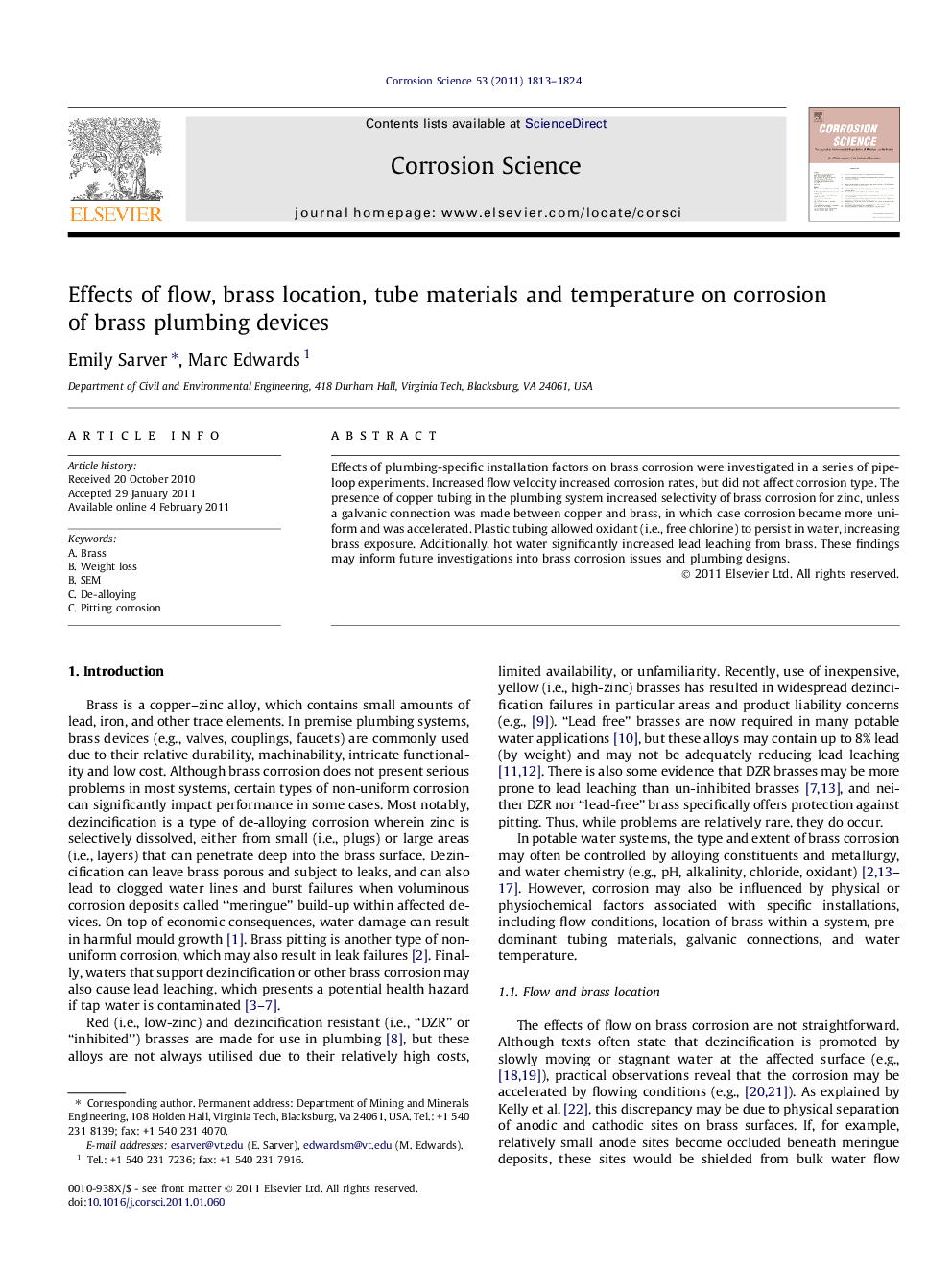| Article ID | Journal | Published Year | Pages | File Type |
|---|---|---|---|---|
| 1470350 | Corrosion Science | 2011 | 12 Pages |
Effects of plumbing-specific installation factors on brass corrosion were investigated in a series of pipe-loop experiments. Increased flow velocity increased corrosion rates, but did not affect corrosion type. The presence of copper tubing in the plumbing system increased selectivity of brass corrosion for zinc, unless a galvanic connection was made between copper and brass, in which case corrosion became more uniform and was accelerated. Plastic tubing allowed oxidant (i.e., free chlorine) to persist in water, increasing brass exposure. Additionally, hot water significantly increased lead leaching from brass. These findings may inform future investigations into brass corrosion issues and plumbing designs.
Research highlights► Increased flow velocity increases brass corrosion rates. ► Galvanic connections between brass and copper reduce selectivity of brass corrosion for zinc. ► Increased temperature may increase lead leaching from brass. ► Brass may be exposed to much higher dissolved oxidant concentrations in plastic plumbing tube systems than in copper systems.
